I have to say that it’s really hard to imagine how an entire city can get lost but that’s exactly what has happened to the lost cities on this top 10 list. There are actually many reasons why a city has to be abandoned – War, natural disasters, climate change and the loss of important trading partners to name a few. whatsoever the cause, these lost cities were gone in time until they were rediscovered centuries later.
10 – Ciudad Perdida, Colombia

The city was built between the eighth and the fourteenth centuries by the Tayrona Indians. Nowadays only circular stone terraces covered by jungle remain, but the views and the location of the site are extraordinary. Local name for Ciudad Perdida is Teyuna which is now an ancient, ruined city located in the Colombian jungle close to Santa Marta. Steep climbs, slippery mud, river crossings and venomous creepy crawlies – the trek to Colombia’s Lost City is nothing but a haven for adventure seekers.
9 – Babylon, Iraq

Babylon is the most famous city from ancient Mesopotamia whose ruins lie in modern-day Iraq 59 miles (94 kilometres) southwest of Baghdad. The name is thought to derive from bav-il or bav-ilim which, in the Akkadian language of the time, meant ‘Gate of God’ or `Gate of the Gods’ and `Babylon’ coming from Greek. The city owes its fame (or infamy) to the many references the Bible makes to it; all of which are unfavourable. In the Book of Genesis, chapter 11, Babylon is featured in the story of The Tower of Babel and the Hebrews claimed the city was named for the confusion which ensued after God caused the people to begin speaking in different languages so they would not be able to complete their great tower to the heavens (the Hebrew word bavel means `confusion’).
Babylon also appears prominently in the biblical books of Daniel, Jeremiah, and Isaiah, among others, and, most notably, The Book of Revelation. It was these biblical references which sparked interest in Mesopotamian archaeology and the expedition by the German archaeologist Robert Koldewey who first excavated the ruins of Babylon in 1899 CE. Outside of the sinful reputation given it by the Bible, the city is known for its impressive walls and buildings, its reputation as a great seat of learning and culture, the formation of a code of law which pre-dates the Mosaic Law, and for the Hanging Gardens of Babylon which were man-made terraces of flora and fauna, watered by machinery, which were cited by Herodotus as one of the Seven Wonders of the World.
8 – Akrotiri, Santorini Island, Greece
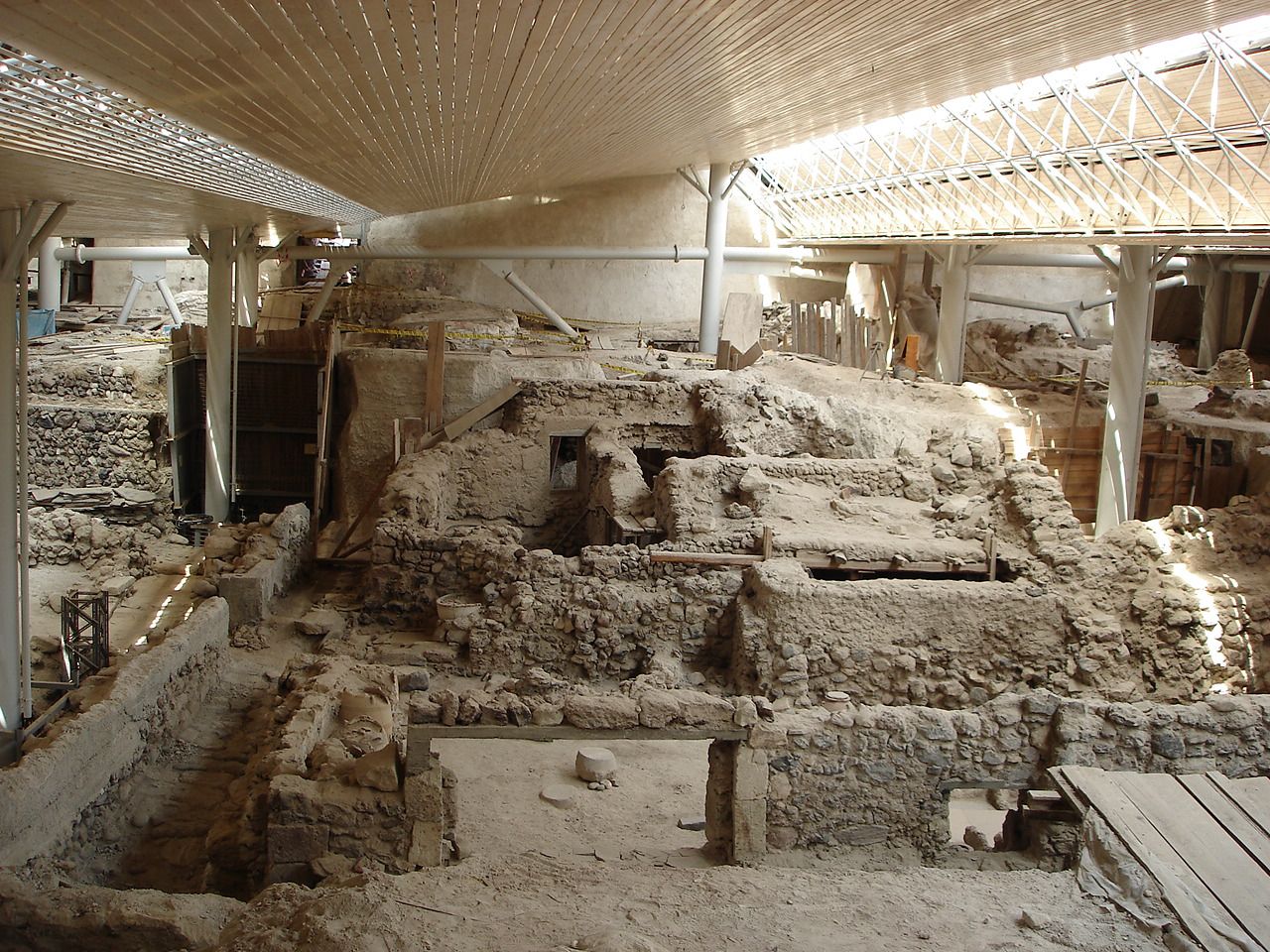
Akrotiri was a valuable port city on the rich, fertile island of Thera. It was a city with 2 and 3 storey buildings, mostly residential and decorated with wall paintings/fresco. Typically, th e ground floors and basements housed mills and grinders, workshops, store rooms, a kitchen and bath tub. Buildings had staircases of stone or timber leading to the upper stories, and also had small windows for air circulation. The buildings show serious earthquake damage and seem to have been under restoration when the eruption occurred. Rapid evacuation of Thera prior to the eruption is supported by the complete absence of bodies under the ruins as well as the lack of objects made of precious metals. The fleeing Minoans took their valuables with them.
Akrotiri was buried in ashfall when the volcano erupted and destroyed much of the island. It has been speculated that the eruption of Thera was a pivotal cause in the destruction of the bronze age civilization of the Minoans, but evidence exists that some areas of the Minoan civilization survived the eruption intact without being affected by tidal waves, earthquakes, or ash fall. Because the town was buried, walls have survived here that are sometimes intact up to the second floor. This was a Cycladic town with heavy Minoan influences from the art, and artifacts that were found. The art and pottery found on Thera matches Minoan art and artifacts found on Crete, but differences in styles show Cycladic influence. Scientists have rediscovered Akrotiri and archaeologists are working to fully excavate it. This very town is believed to be the source of the Atlantis legend.
7 – Pompeii, Italy
The city of Pompeii was an ancient Roman town-city near modern Naples in the Italian region of Campania, in the territory of the comune of Pompei. Pompeii, along with Herculaneum and many villas in the surrounding area, was mostly destroyed and buried under 4 to 6 m (13 to 20 ft) of ash and pumice in the eruption of Mount Vesuvius in 79 AD.
Researchers believe that the town was founded in the seventh or sixth century BC by the Osci or Oscans and was captured by the Romans in 80 BC. By the time of its destruction, 160 years later, its population was probably approximately 20,000, and the city had a complex water system, an amphitheatre, gymnasium and a port.
The eruption was cataclysmic for the town. Evidence for the destruction originally came from a surviving letter by Pliny the Younger, who saw the eruption from a distance and described the death of his uncle Pliny the Elder, an admiral of the Roman fleet, who tried to rescue citizens. The site was lost for about 1,500 years until its initial rediscovery in 1599 and broader rediscovery almost 150 years later by Spanish engineer Rocque Joaquin de Alcubierre in 1748. The objects that lay beneath the city have been well preserved for centuries because of the lack of air and moisture. These artifacts provide an extraordinarily detailed insight into the life of a city during the Pax Romana. During the excavation, plaster was used to fill in the voids between the ash layers that once held human bodies. This allowed one to see the exact position the person was in when he or she died.
6 – Palmyra, Syria
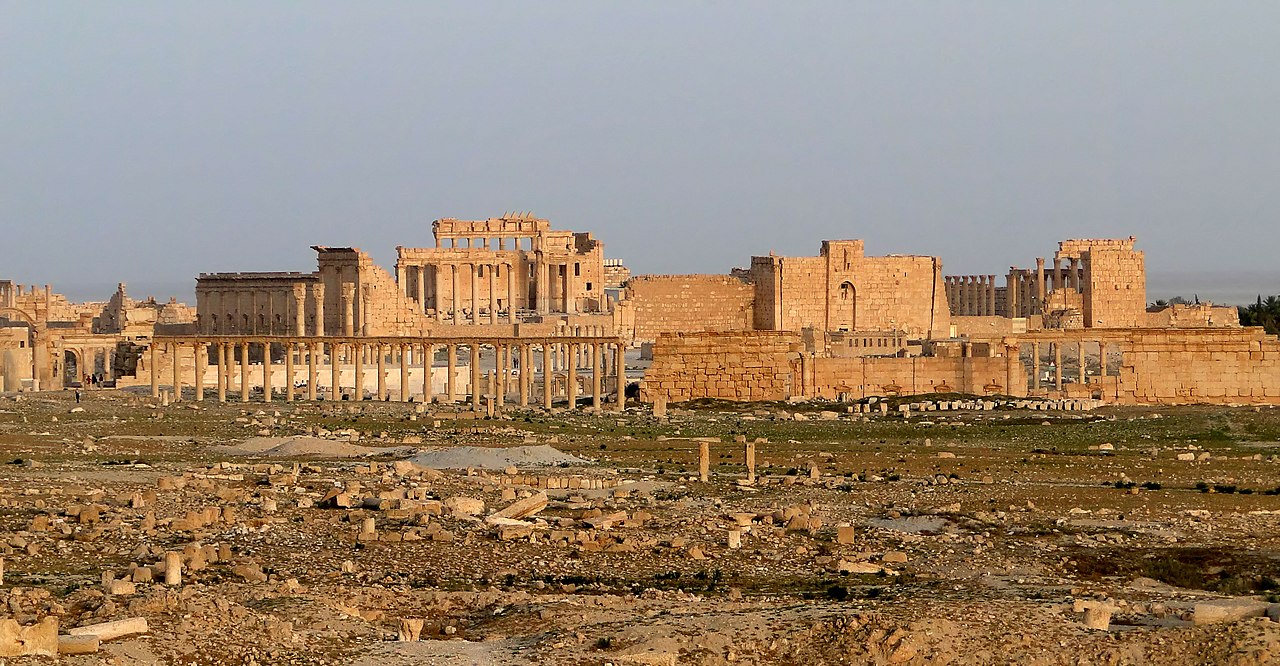
Palmyra was an ancient Aramaic city in central Syria. In antiquity, it was an important city located in an oasis 215 km northeast of Damascus and 180 km southwest of the Euphrates at Deir ez-Zor. It had long been a vital caravan stop for travellers crossing the Syrian Desert and was known as the Bride of the Desert. The earliest documented reference to the city by its Semitic name Tadmor, Tadmur or Tudmur (which means “the town that repels” in Amorite and “the indomitable town” in Aramaic) is recorded in Babylonian tablets found in Mari.
Though the ancient site fell into disuse after the 16th century, it is still known as Tadmor in Arabic. There is a newer town of the same name next to the ruins. The Palmyrenes constructed a series of large-scale monuments containing funerary art such as limestone slabs with human busts representing the deceased.
5 – Troy, Turkey
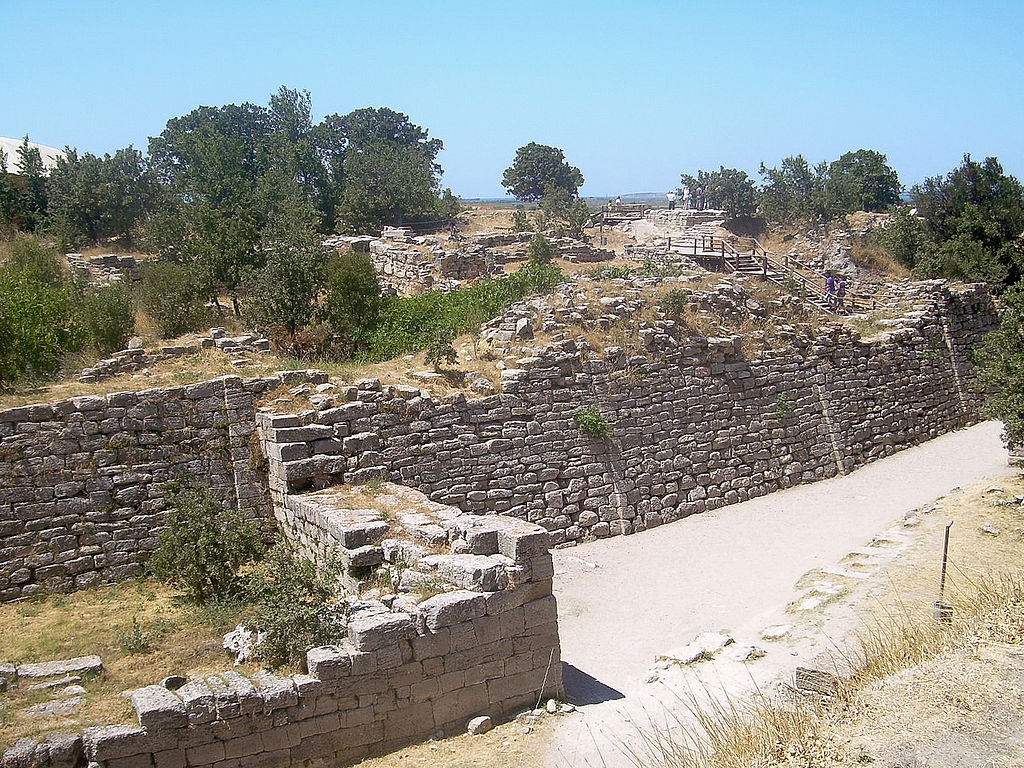
Troy was a city well-known to both history and legend. It is situated in northwest Anatolia in what is now Turkey, south of the southwest end of the Dardanelles/Hellespont and northwest of Mount Ida. It is best known for being the setting of the Trojan War described in the Greek Epic Cycle and especially in the Iliad, one of the two epic poems attributed to Homer. Metrical evidence from the Iliad and the Odyssey seems to show that the name Ἴλιον (Ilion) formerly began with a digamma: Ϝίλιον (Wilion). This was later supported by the Hittite form Wilusa.
A new city called Ilium was founded on the site in the reign of the Roman Emperor Augustus. It flourished until the establishment of Constantinople and declined gradually during the Byzantine era.
In 1865, English archaeologist Frank Calvert excavated trial trenches in a field he had bought from a local farmer at Hisarlık, and in 1868, Heinrich Schliemann, wealthy German businessman and archaeologist, also began excavating in the area after a chance meeting with Calvert in Çanakkale. These excavations revealed several cities built in succession. Schliemann was at first skeptical about the identification of Hisarlik with Troy, but was persuaded by Calvert and took over Calvert’s excavations on the eastern half of the Hisarlik site, which was on Calvert’s property. Troy VII has been identified with the Hittite Wilusa, the probable origin of the Greek Ἴλιον, and is generally (but not conclusively) identified with Homeric Troy.
4 – Tikal, Guatemala
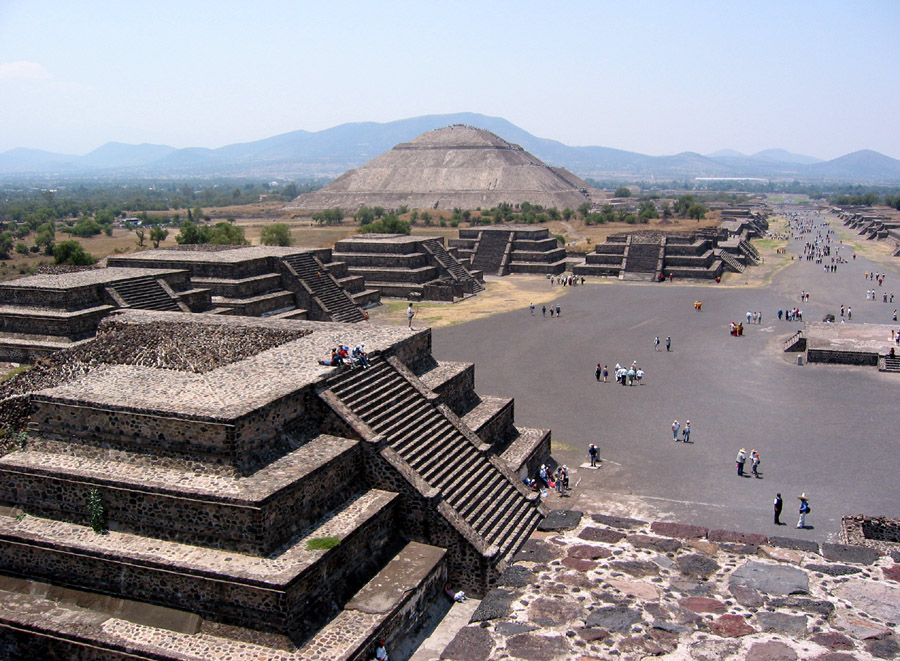
Tikal in modern Mayan orthography) is one of the largest archaeological sites and urban centres of the pre-Columbian Maya civilization. It is located in the archaeological region of the Petén Basin in what is now northern Guatemala. Situated in the department of El Petén, the site is part of Guatemala’s Tikal National Park and in 1979 it was declared a UNESCO World Heritage Site.
Tikal was the capital of a conquest state that became one of the most powerful kingdoms of the ancient Maya. Though monumental architecture at the site dates back as far as the 4th century BC, Tikal reached its apogee during the Classic Period, ca. 200 to 900 AD. During this time, the city dominated much of the Maya region politically, economically, and militarily, while interacting with areas throughout Mesoamerica such as the great metropolis of Teotihuacan in the distant Valley of Mexico. There is evidence that Tikal was conquered by Teotihuacan in the 4th century AD. Following the end of the Late Classic Period, no new major monuments were built at Tikal and there is evidence that elite palaces were burned. These events were coupled with a gradual population decline, culminating with the site’s abandonment by the end of the 10th century.
3 – Petra, Jordan
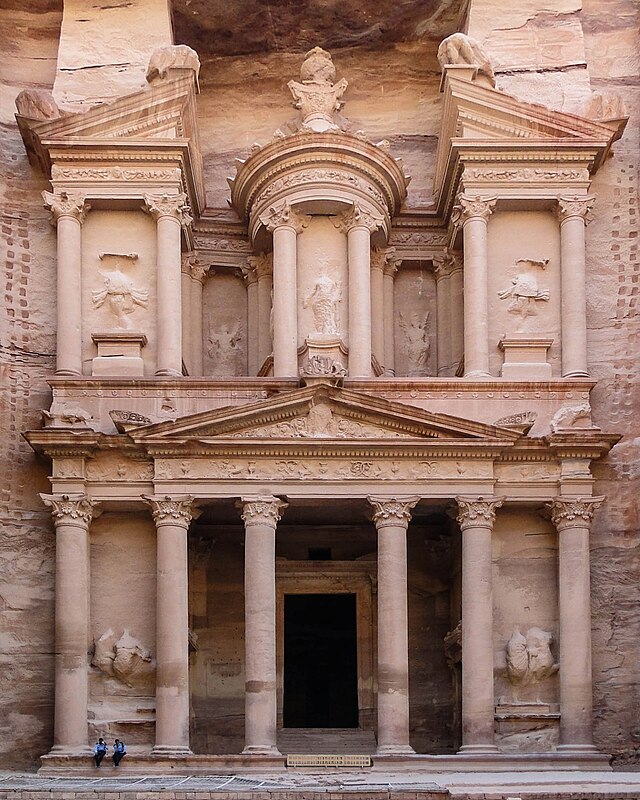
Inhabited since prehistoric times, this Nabataean caravan-city, situated between the Red Sea and the Dead Sea, was an important crossroads between Arabia, Egypt and Syria-Phoenicia. Petra is half-built, half-carved into the rock, and is surrounded by mountains riddled with passages and gorges. The city is a symbol of Jordan, as well as Jordan’s most-visited tourist attraction. It lies on the slope of Jebel al-Madhbah (identified by some as the biblical Mount Hor in a basin among the mountains which form the eastern flank of Arabah (Wadi Araba), the large valley running from the Dead Sea to the Gulf of Aqaba. Petra has been a UNESCO World Heritage Site since 1985.
The site remained unknown to the Western world until 1812, when it was introduced by Swiss explorer Johann Ludwig Burckhardt. It was described as “a rose-red city half as old as time” in a Newdigate Prize-winning poem by John William Burgon. UNESCO has described it as “one of the most precious cultural properties of man’s cultural heritage”.
2 – Angkor Wat, Cambodia

Angkor Wat was first a Hindu, then subsequently a Buddhist, temple complex in Cambodia and the largest religious monument in the world. The temple was built by the Khmer King Suryavarman II in the early 12th century in Yaśodharapura, the capital of the Khmer Empire, as his state temple and eventual mausoleum. Breaking from the Shaiva tradition of previous kings, Angkor Wat was instead dedicated to Vishnu.
As the best-preserved temple at the site, it is the only one to have remained a significant religious center since its foundation. The temple is at the top of the high classical style of Khmer architecture, which received major influence from Kalinga architecture. It has become a symbol of Cambodia, appearing on its national flag, and it is the country’s prime attraction for visitors.
There’s a new update according to the Sydney Morning Herald published an exclusive report revealing that archaeologists have uncovered a lost mediaeval city in the jungles of Cambodia, which predates Angkor Wat by 350 years.
1 – Machu Picchu, Peru
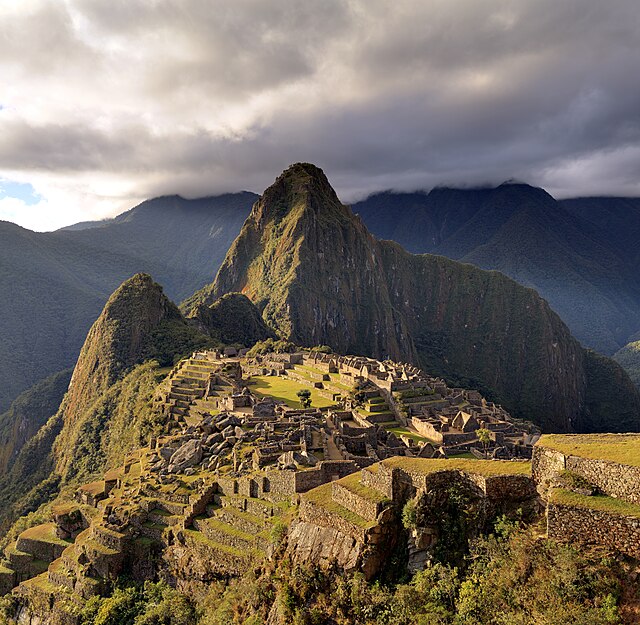
Machu Picchu or Machu Pikchu is a 15th-century Inca site located 2,430 metres (7,970 ft) above sea level. It is located in the Cusco Region, Urubamba Province, Machupicchu District in Peru. It is situated on a mountain ridge above the Sacred Valley which is 80 kilometres northwest of Cusco and through which the Urubamba River flows. Most archaeologists believe that Machu Picchu was built as an estate for the Inca emperor Pachacuti (1438–1472). Often mistakenly referred to as the “Lost City of the Incas”, it is perhaps the most familiar icon of Inca civilization.
The Incas built the estate around 1450, but abandoned it a century later at the time of the Spanish Conquest. Although known locally, it was unknown to the outside world before being brought to international attention in 1911 by the American historian Hiram Bingham. Since then, Machu Picchu has become an important tourist attraction. Most of the outlying buildings have been reconstructed in order to give tourists a better idea of what the structures originally looked like. By 1976, thirty percent of Machu Picchu had been restored. The restoration work continues to this day.
Reference: Wikipedia.org

